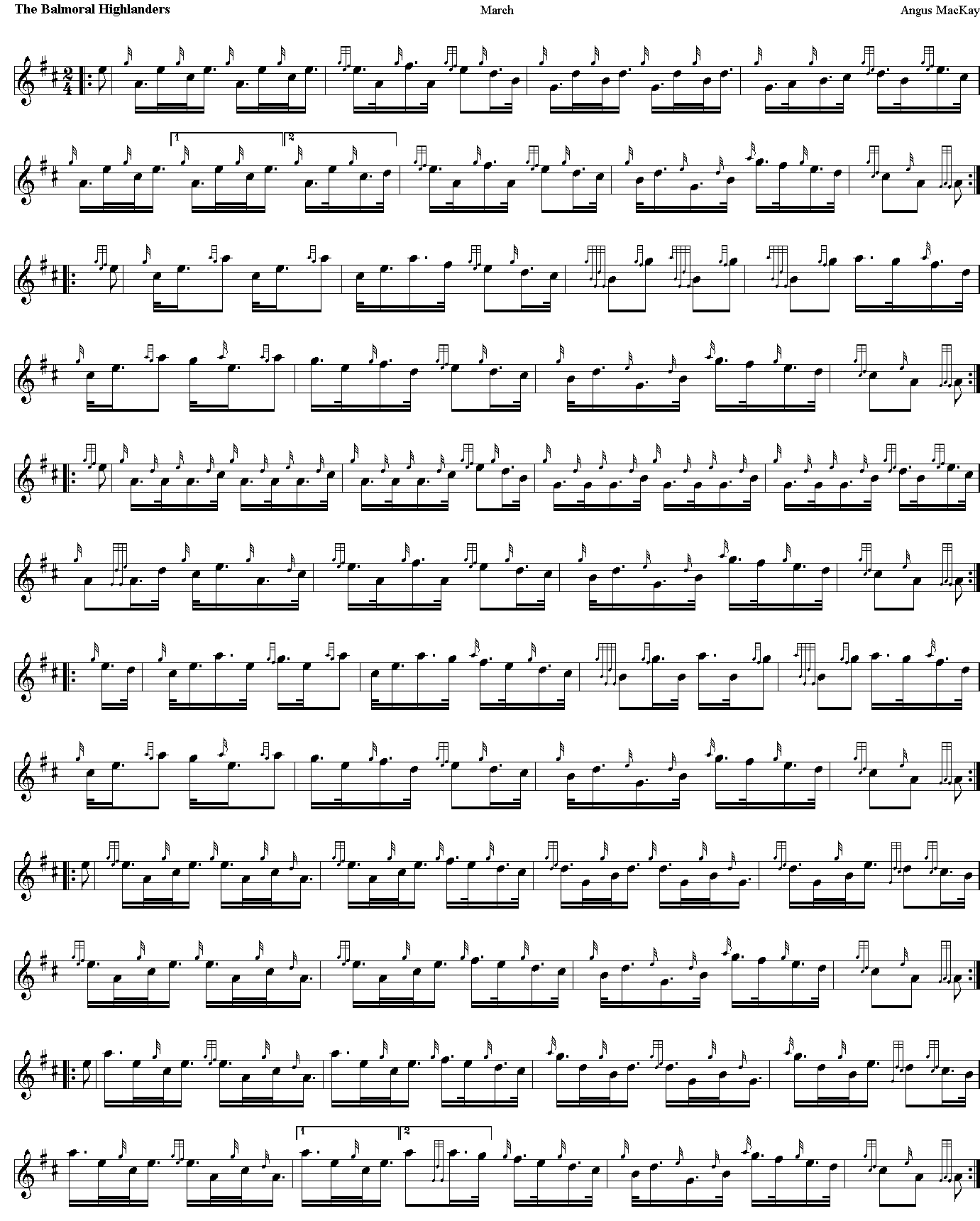|
If anyone in
the history of piping deserves to
be described as a musical genius, it is
Angus MacKay (1813-1859) - shown above.
He was
born on September 10, 1813, likely
on Raasay, an island off the
northwest coast of Scotland. His
three brothers were also pipers. His
father, John MacKay of Raasay
(1767-1848), was the leading
composer and teacher of his
generation and a revered cultural
figure in the Highlands. In 1823 he
moved the family from their
relatively remote island home to
Drummond Castle near Crieff, where
he became piper to Lord Gwydir.
Angus became piper to Sara Drummond,
Lady Gwydir, while still a boy,
later to Davidson of Tulloch, then
Campbell of Islay, and finally, from
1843 until 1854, to Queen Victoria.
He married Mary Russell in Edinburgh
in 1841 and had two sons and two
daughters.
Piping
success came early, both as a player
and compiler. At 12 years of age, he
won a prize from the Highland
Societies, not for playing, but for
setting pipe tunes in staff
notation. In 1826, at 13, he was
fourth at the Edinburgh competition
and in 1841 he won the Prize Pipe,
playing “The Finger Lock” with 14
pipers competing. Donald Cameron was
third. Like many pipers of his time,
he competed in the dancing as well,
and on this day he also took first
prize as the best-dressed competitor
outfitted at his own expense.
His
prowess as a player, combined with
his station as the first Queen’s
Piper and the son of a legendary
piping father, provided Angus with a
lofty stature from which to
influence his piping world. He did
not squander the opportunity.
His
Collection of Ancient Piobaireachd,
published in 1838, is the considerable
musical product of a man of 25 years. It
contains 61 piobaireachd written in
staff notation (still in its infancy,
pioneered by Donald MacDonald only 16
years earlier) as well as extensive
writings on the piping dynasties and the
Highland Society competitions from their
inception in 1781 to the date of
publication. The historical material was
in fact written by James Logan, an
Aberdeen journalist and under-secretary
of the Highland Society of London. But
the musical legacy alone ensured
MacKay’s place in piping history.
Ancient Piobaireachd became the
leading piobaireachd text-authority for
generations after his death and was
reprinted in 1839 and 1899. It would
become the single most important
published source for the early volumes
of the Piobaireachd Society
Collection and a major influence on
how piobaireachd was played in the 19th
century. But this was not all.
In 1841, MacKay
approached the Highland Society of
London with a proposal to publish a much
larger manuscript collection containing
183 tunes – most of the known
piobaireachd repertoire collected from
his father and other notable pipers of
the day. In a massive cultural blunder,
the Highland Society declined the offer,
and while what became known as ‘the
Angus MacKay Manuscript’ has survived,
it has never been readily accessible to
players. At the time of this writing, it
remains unpublished, though well studied
and invoked extensively by later
compilers.
Angus
MacKay’s influence on light music was
also considerable. He penned the
original melodies of some the of great
tunes in the piping repertoire: "The
Balmoral Highlanders," "The Glengarry
Gathering," "The Duke of Roxburgh’s
Farewell to the Blackmount Forest," "The
Abercairney Highlanders" and the
strathspey "Balmoral Castle." In 1843 he
compiled a collection of light music,
called The Piper’s Assistant,
with 155 tunes, which went to several
editions. In 1849 he began to compile a
similar collection which eventually ran
to 500 tunes. But it would never see
publication.
In 1854 he
was afflicted with a sudden and violent
attack of apparent insanity that soon
cost him his royal appointment. His
later years were dogged by mental
illness and he spent the rest of his
life confined to institutions. He died
on March 21, 1859 trying to escape from
the Crichton Royal Hospital by swimming
the River Nith and his body was never
found.

|



